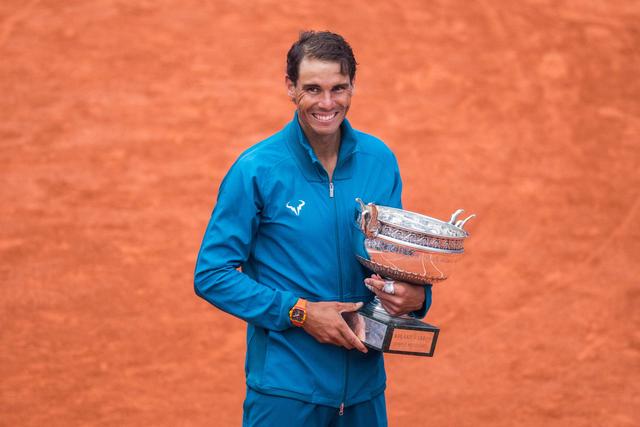
This is an image that we got into the habit of seeing Roland-Garros: a camera zoom in the gallery to see the VIP public (actors, singers, animators ...) scrutinize very clean champions on them in silence.As if we stayed between rich, among the elite.Since its beginnings, tennis has been conveying this image of high society sport.Is this really the case?
Birth in English High Society
From a historical point of view, there is no doubt, tennis is a sport of rich!Adapted from the palm game which was practiced by the nobility in the Middle Ages, tennis was born among the members of the aristocratic class and the English High Bourgeoisie in the 19th century.He exported himself to the continent when they were traveling for business or pleasure.
Descending in hotels or upscale establishments, the Lords insisted so that tennis courts are built ... Part between people in high society being the best way to do business.A custom which, moreover, always exists ... more generally, the values linked to tennis remain those of the English gentlemen: courtesy, respect for the opponent and correct holding required.
The Age of the opening
Tennis therefore stands out from street sports (basketball, football) which have become real popular sports.Aware of this somewhat too polished image and with the aim of democratizing sport, the International Tennis Federation decided in 1968 to go to the open era.What are called open tournaments (the US Open, the Australian Open, the French Open, namely Roland-Garros and the British Open, ie Wimbledon) does not mean tournament outdoors, but "open" tournament atprofessionals.

Indeed, until then, tennis was played according to two circuits: the amateur circuit and the professional circuit.In reality, it was a question of distinguishing between easy bourgeoisie and popular class.Because, even if the professionals were (logically) better players, it was the amateur circuit that was most followed and renowned.Why ?Because amateurs were simply the players from affluent classes who did not need to make money by playing.The people of the Haute, so ... known people!At least, in the small closed environment of the elites ...
Incomplete democratization
The Open era which opened in 1968 was intended to break these borders and make tennis more popular (in both senses).A democratization which has proven to be "incomplete", according to Anne-Marie Waser, author of "sociology of tennis: genesis of a crisis, 1960-1990", quoted by rue 89: "It is not a unbridled sport,It cannot be diverted in a fun way like street sports.The referees of all the major tournaments impose silence in the stands, there is a polite code ... The rules are there to maintain the tradition ”.
However, a job has indeed been done in this sense.Since 1968, memberships have been multiplied by three, sport has touched the popular classes more.Some champions such as the Serena and Venus Williams sisters even come directly from poor neighborhoods (Compton, in this case, in the suburbs of Los Angeles, one of the most violent places in the world).But tennis cannot still be considered a sport of the people.
Middle class sport
There are several reasons for this, all very simple and linked to the portfolio.The first is that to play tennis and hope to progress, it is necessary to play on a real short.A net stretched between two posts will not be enough, the rebound of the ball is part of the training.It also takes a racket and bullets.However, for a good racket, it takes minimum 30 euros.
Then, having to play on a real short implies, for most amateurs, to be a member of a club whose contribution must be paid for the year.A bit like riding or golf.It is also a good way to stay between yourself, among your social class.Despite the construction of courts in many municipalities, tennis remains a sport, perhaps no aristocratic elite, but in any case of middle class.If it is the most popular individual sport, it is still not a truly popular sport.







